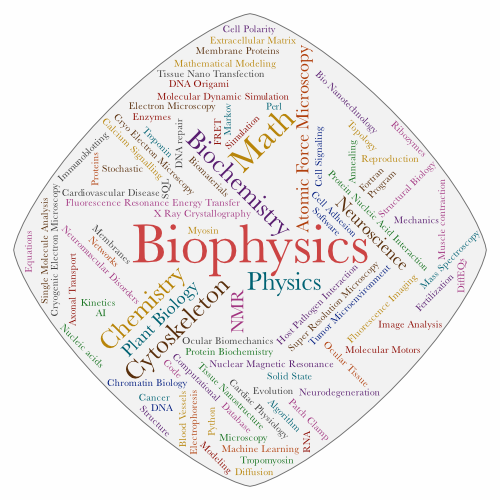The Interdisciplinary Biophysics Graduate Program covers a very broad range of different research directions. In order to provide some structure, the program is thus organized into four divisions, Structural Biology and Molecular Biophysics, Cellular and Integrative Biophysics, Computational Biology and Bioinformatics, and Biological Spectroscopy and Imaging. For a list of faculty in each division, please click the headings below or view our faculty directory.
Structural Biology and Molecular Biophysics

Three dimensional structure of proteins, lipids and nucleic acid structures, protein-protein, protein-lipid and protein-ligand interactions, macromolecular structure-function, protein dynamics, molecular modeling and crystallography.
Cellular and Integrative Biophysics
Application of physics to living animals and plants, including membrane electrochemical behavior, patch clamping, channel biology, Ca+2 regulation, molecular motors, cytoskeleton, muscle contractile function, nerve function, neural integration, bioenergetics and mitochondrial function, free radical biology and biomechanics.
Computational Biology and Bioinformatics
The use of high level computational techniques and computer modeling to address biological problems and to model molecular aspects of living cells. The development and use of computer models, simulations and statistical approaches to interpret large data sets of the genome, proteome and lipid elements of the cell as well as neural networks and other biological networks.
Biological Spectroscopy and Imaging
The application of high-end technology for imaging and detection of chemical and biological processes and structures. Techniques include magnetic resonance (MRI, NMR, EPR, etc.), light/laser spectroscopy, multiphoton and confocal imaging, electron microscopy, optics, fluorescent detection, etc.
